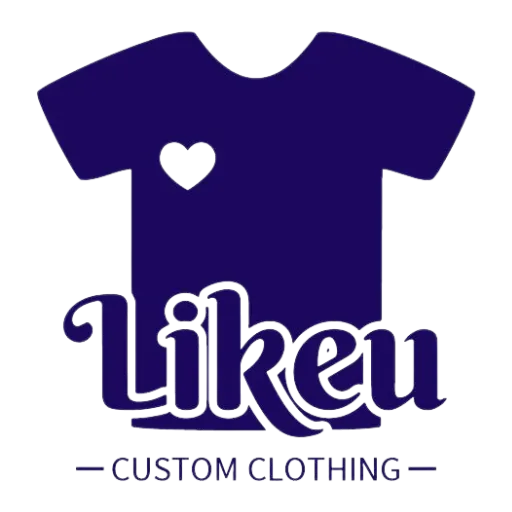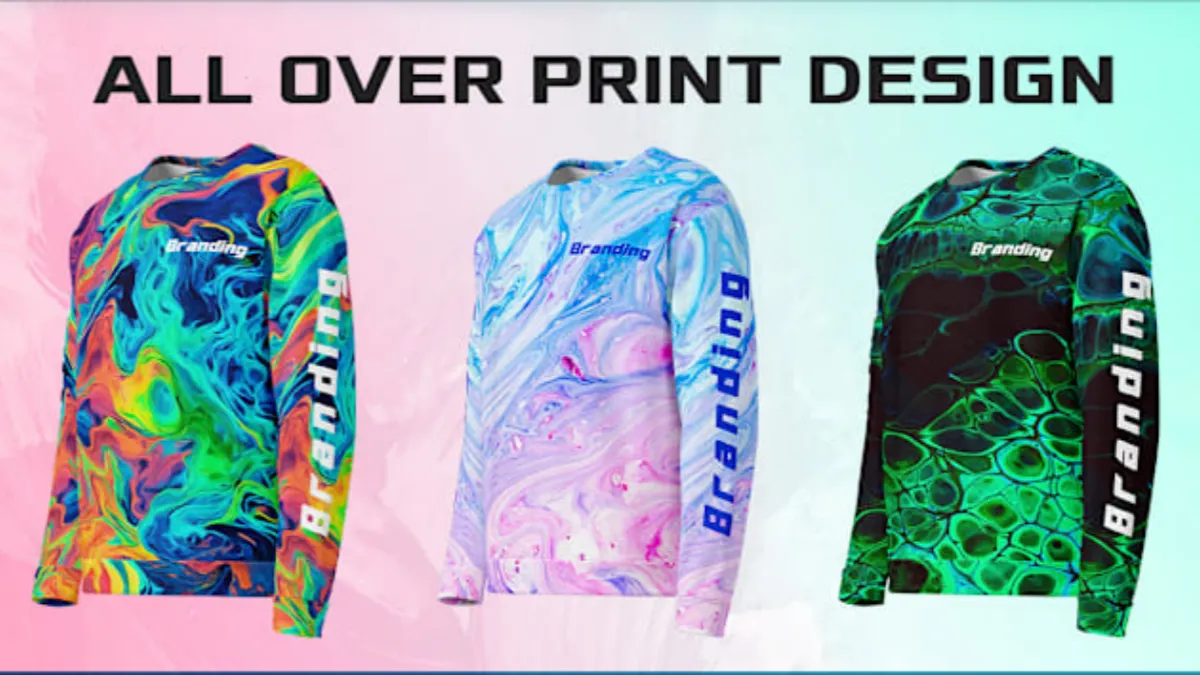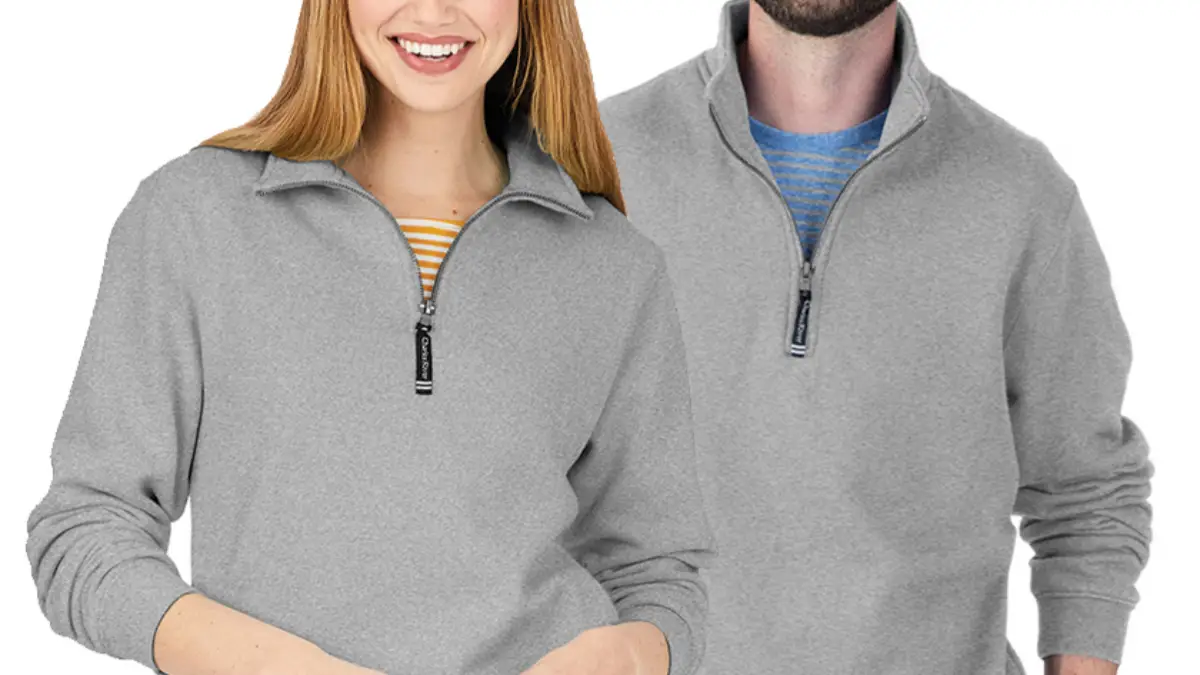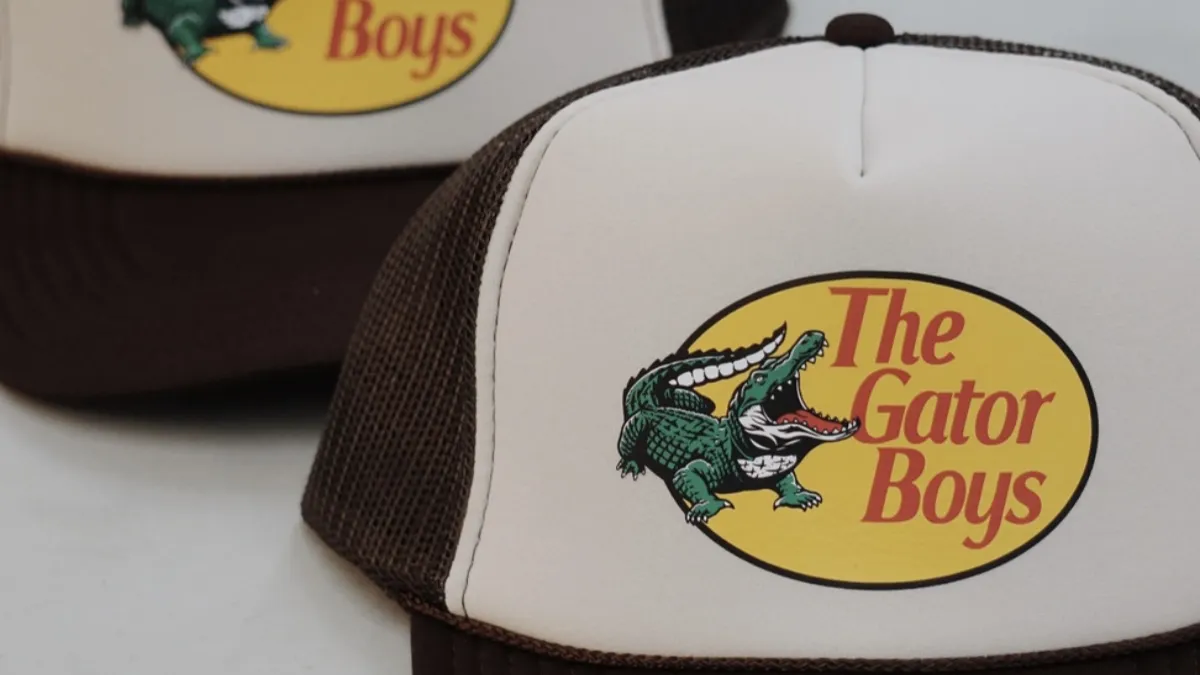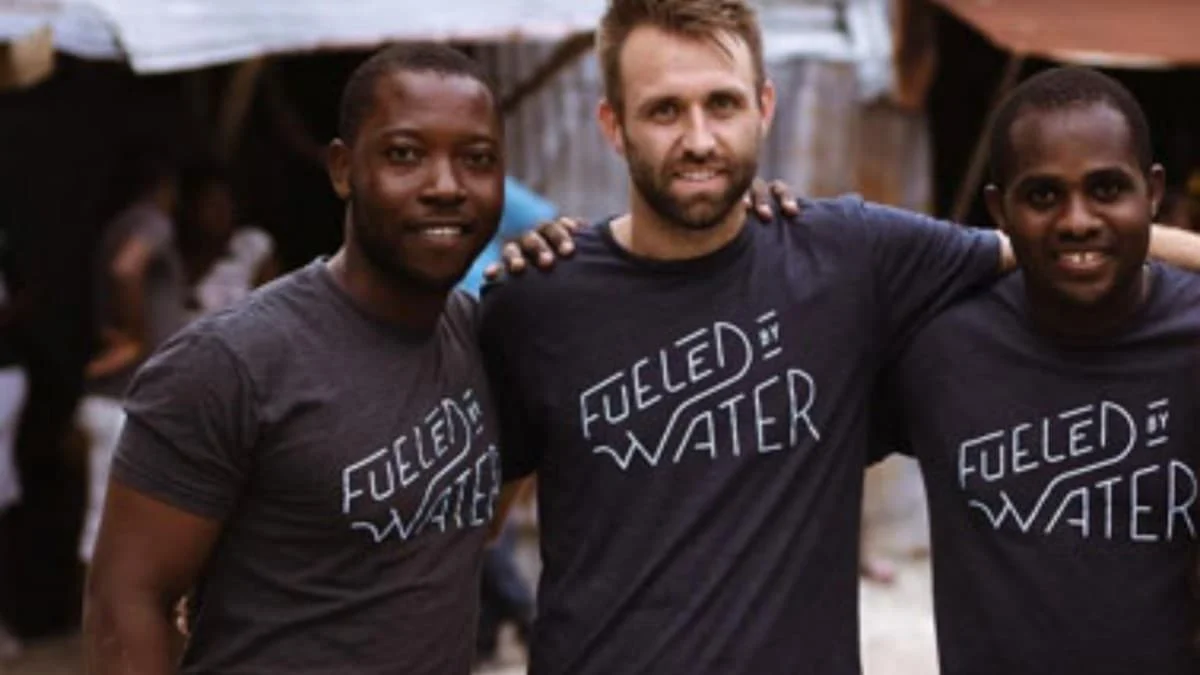When you pick a custom all over print sweatshirt, the material you pick changes how it turns out. Polyester is great for bright all-over prints, especially with sublimation. Heavyweight cotton feels comfy, lasts long, and gives sharp prints. Cotton-poly blends are soft, keep prints clear, and do not fade fast. They are good for wearing every day. Each sweatshirt material changes how designs look, feel, and last. You should decide if you want bright colors, soft feel, or strong wear when you choose your sweatshirt.
Key Takeaways
Polyester fabric makes prints look very bright and last long. This is good for sweatshirts with colorful designs. Cotton feels soft and lets your skin breathe. But it can shrink and lose color if you do not wash it right. Cotton-polyester blends are soft and strong. They are easy to take care of and keep prints clear. Eco-friendly fabrics like organic cotton and recycled polyester are better for the earth. They still feel nice and last a long time. Pick your sweatshirt fabric by what matters most to you. You can choose bright prints, comfort, strength, or helping the planet.
Why Material Matters for All-Over-Print
Print Quality
Picking a fabric for your all-over-print sweatshirt changes how your design looks and lasts. The print’s quality depends on what material you use. Sublimation printing works best with polyester. This way, the ink sticks to the fibers, so colors stay bright and do not fade after many washes. Cotton uses direct-to-garment (DTG) printing for sharp designs. But thick sweatshirts may not show prints as well as t-shirts. Blended fabrics, like 50/50 cotton-polyester, give you bright and colorful prints. Screen printing works on lots of materials, but the print can look different depending on the fabric’s weight and feel. Puff and metallic inks need the right fabric to look good and feel nice.
Comfort & Feel
How comfy your all-over-print sweatshirt feels depends on the fabric. Cotton is soft and lets your skin breathe. Polyester is light and keeps you dry, so it is good for sports. Blended fabrics mix cotton’s softness and polyester’s strength. This makes sweatshirts feel nice and last longer. The fabric’s weight matters too. Lighter fabrics feel cooler. Heavier ones keep you warm. Some new materials, like bamboo or recycled polyester, feel extra soft and help the planet.
Durability & Care
How long your all-over-print sweatshirt lasts is important. Cotton can shrink and fade if you do not wash it right. Polyester does not shrink, wrinkle, or fade much, so prints stay bright. Blended fabrics do not pill or lose shape easily. To keep prints looking good, turn your sweatshirt inside out, use cold water, and air dry. Special prints, like puff or metallic, need gentle washing to last. Taking care of your sweatshirt keeps it looking new.
Aspect | Cotton | Polyester | Cotton-Polyester Blends |
|---|---|---|---|
Durability | Moderate; may shrink or fade | High; resists shrinking and fading | Improved durability and shape retention |
Care Needs | Easy care, machine washable | Similar to polyester, keeps softness |
Cost Factors
The price of your all-over-print sweatshirt depends on the fabric. Premium cotton costs more but feels soft and keeps colors strong. Polyester blends cost more because they last longer and keep prints bright. Cheaper cotton costs less but may fade or pill. New materials, like eco-friendly fabrics, cost more but are better for the earth. The fabric you pick changes both the quality and the price of your sweatshirt.
Tip: Always check if your fabric works with your print method. Sublimation and screen printing can change how your sweatshirt looks and how much it costs.
Material Type | Cost Range (USD) | Key Features |
|---|---|---|
Premium Cotton | ~$32 | Soft, durable, high color quality |
Polyester Blends | Higher | Long-lasting, bright prints |
Budget Cotton | $13-15 | Lower cost, less durable |
New Materials | +$8-15 | Eco-friendly, soft, unique feel |
Picking the right fabric and print method, like sublimation or screen printing, helps you get a sweatshirt that looks good, feels comfy, and lasts a long time.
Cotton: Pros and Cons
Print Results
Cotton is a natural fabric that works with many print methods. It is great for screen printing because it soaks up ink well. This gives you clear and sharp designs. Direct-to-garment printing also works on cotton. But colors may not look as bright as on polyester. Newer ways, like reactive printing, help cotton show bold prints. This method makes the dye stick to the fabric. You get bright colors and the fabric stays soft and lets air through. Cotton does not work with sublimation printing. That method is best for synthetic fabrics. If you want comfy hoodies with good prints, cotton is a strong choice.
Note: Cotton feels soft and shows details well, but colors are not as bright as polyester.
Comfort & Breathability
Wearing a cotton all-over-print sweatshirt feels very soft. Cotton is known for being gentle and comfy. The fabric lets air move through, so you stay cool. This helps you not get too hot, even if you wear it all day. Cotton is hypoallergenic, so it is good for sensitive skin. Many people pick cotton for sweatshirts that feel nice and look good. If you want comfort and a natural feel, cotton is a top pick.
Lets air flow to keep you cool
Good for people with allergies or sensitive skin
Durability
Cotton sweatshirts are soft, but they may not last as long as blends. Pure cotton can wear out faster than polyester or blends. You might see pilling, tearing, or fading after many washes. Cotton can shrink if you wash it in hot water or dry it with high heat. It also wrinkles easily, so you may need to iron it. If you want your sweatshirt to last longer, try a cotton-polyester blend. Blends keep cotton’s comfort but add strength and stop wrinkles. With good care, cotton sweatshirts can last and keep their prints looking nice.
Disadvantages of Cotton for All-Over-Print Sweatshirts | |
|---|---|
Soft, breathable, and great for daily wear | Shrinks if washed or dried with heat |
Absorbs moisture and helps keep you cool | Wrinkles easily because of natural fibers |
Good for sensitive skin | Prints can fade after washing or sun exposure |
Takes print and dye well | Costs more because cotton is a natural fiber |
Renewable and biodegradable | Does not wick moisture as well as synthetics |
Traps air to keep you warm | Gets heavy and damp when wet |
Not as strong and can pill or tear more than blends |
Care Needs
You need to take care of your cotton sweatshirt to keep it nice. Wash it inside out in cold water. Use a gentle cycle and do not use harsh soap. Air dry is best, but if you use a dryer, use low heat. Take it out while still a little damp to stop shrinking. Store your hoodie flat or hang it up to stop wrinkles. If you need to iron, do it on the inside with a warm iron. These steps help your cotton sweatshirt last longer and keep prints looking good. Good care keeps your sweatshirt soft, comfy, and colorful for a long time.
Tip: Wash gently and care for your hoodie to keep prints bright and make it last longer.
Polyester: Pros and Cons
Sublimation Print Quality
Polyester gives you the brightest and most detailed prints. Sublimation printing works best on polyester because the ink sticks right to the fibers. This makes your hoodies look bright and the colors do not fade. The heat press works well with polyester, so prints stay sharp. If you pick polyester with at least 65%, the ink goes deep into the fabric. Your sweatshirt will not peel, crack, or lose its look after many washes. Cotton cannot match this print quality because the ink does not bond as well. Sublimation on polyester makes hoodies that keep their color and detail for a long time. The prints feel soft and smooth, with no extra texture.
Polyester is best for sublimation printing because:
The ink becomes part of the fabric, not just on top.
The fabric can handle the heat and pressure.
Polyester hoodies show off the best sublimation results.
Durability & Shape
Polyester is strong and keeps its shape well. You can wear your sweatshirt many times and it still looks new. The fabric does not shrink, pill, or fade, even after lots of washing. Polyester hoodies keep their fit and do not stretch out. The rib knit cuffs and waistbands help the sweatshirt stay snug. Four-way stretch lets the fabric move with you and bounce back. You do not have to worry about wrinkles or losing color. Polyester’s strength means your hoodie lasts longer than others. You get a sweatshirt that keeps its look and quality, even with heavy use.
Polyester’s durability means:
It keeps its shape after many washes.
It does not tear, pill, or wrinkle easily.
Colors and prints stay bright over time.
Polyester hoodies are a smart pick for lasting wear.
Comfort & Moisture
A polyester sweatshirt feels light and smooth. The fabric pulls sweat away from your skin and dries fast. This keeps you dry and comfy, even during sports or outside. Polyester hoodies trap heat, so they work well in cold weather. But the fabric does not breathe as well as cotton. Sometimes you might feel warmer or notice less air flow. Polyester can also hold onto smells if you sweat a lot. It does not feel as soft or natural as cotton, but it gives you good performance for active wear.
Aspect | Polyester | Cotton |
|---|---|---|
Can feel synthetic and trap heat, less cozy | Superior comfort, breathable, feels like a warm hug, hypoallergenic | |
Moisture-wicking | Quick-drying, moisture-wicking keeps you dry | Absorbs moisture rather than wicking, better for temperature regulation but less ideal for intense sweating |
Odor retention | Tends to retain odor more after sweating | Less odor retention |
Durability | Durable, wrinkle-resistant, resistant to tears and pilling | Can be high-maintenance but modern treatments improve durability and wrinkle resistance |
Climate suitability | Better for colder climates due to insulating properties | Better for warmer climates due to breathability and UV resistance |
Environmental impact | Derived from fossil fuels, non-biodegradable, recycling challenges | Biodegradable, lower environmental footprint, especially organic cotton |
Tip: Polyester is great for sports or outdoor hoodies. For daily comfort, you might like cotton or blends more.
Cost & Bulk Orders
Polyester saves money when you order lots of hoodies. The fabric is cheap for big orders because setup costs are spread out. Suppliers give better prices when you buy more, like at 25, 50, 100, or 250+ hoodies. You can save up to 60% compared to buying just one. Sublimation printing on polyester also cuts costs. You do not pay more for extra colors or complex designs. The digital process uses less material and makes less waste, so it is smart for big orders. Polyester blends with 85-90% polyester make hoodies that are both cheap and last a long time. If you need sweatshirts for a team, event, or business, polyester is one of the best picks for bulk orders.
Polyester is cost-effective for big orders because:
Each hoodie costs less when you buy more.
No extra fees for more colors or designs.
Less waste and better use of fabric.
You get good hoodies at a lower price.
Note: Polyester has many pros and cons. It is a top pick for all-over-print sweatshirts if you want quality, strength, and savings on big orders. Think about what you need and what each fabric offers before you choose.
Blends: Different Materials for Sweatshirts
50/50 Cotton-Polyester
A 50/50 cotton-polyester blend is common in nice hoodies. This mix gives you both comfort and strength. Cotton makes the hoodie soft and lets air in. Polyester helps it last longer and keeps its shape. Many brands use this blend for all-over-print sweatshirts. It is comfy and strong at the same time. Your hoodie will feel good and last for years. The fabric does not pill or shrink much, so it looks new after many washes.
Fabric Type | Common Blend Ratios | Benefits |
|---|---|---|
Cotton-Polyester Blends | 50% cotton / 50% polyester | You get cotton’s comfort and polyester’s strength; costs less than some; stretchy, resists wrinkles, lets air in, and soaks up sweat |
Print Performance
The 50/50 blend is great for all-over-print designs. The fabric is smooth, so prints look clear and bright. High-quality hoodies made from this blend show sharp details. Many people like this blend for custom sweatshirts. The prints stay nice after many washes. The fabric holds ink well, so designs do not fade or crack. You can use DTG, DTF, or screen printing on this material. Blends with more polyester are even better for sublimation. They give you the brightest all-over-print results.
Feature/Aspect | Details |
|---|---|
Print Suitability | Big front area, perfect for printing |
Customer Ratings | |
Product Example | Gildan 18500 Heavy Blend Pullover Hoodie, known for great prints |
Comfort & Versatility
A 50/50 blend sweatshirt feels soft and cool. The fabric lets your skin breathe and dries fast. Polyester helps stop wrinkles. You can wear these hoodies for sports, school, or work. Many brands pick blends for all-over-print sweatshirts. They work for lots of activities. The sweatshirt fits well and keeps its shape. It does not shrink much, so the size stays the same.
Cotton-polyester blends give you:
Softness and air flow from cotton
Strength and wrinkle resistance from polyester
Fast drying and easy washing
Good for sports, school, or work
Durability & Maintenance
A 50/50 blend sweatshirt is tough for daily wear. The fabric does not shrink or wrinkle as much as cotton. You do not need to iron it a lot. Hoodies made from this blend keep their color and shape after many washes. The fabric does not pill, so prints stay clear. You should still follow care tips to keep it nice. Wash in cold water and do not use high heat in the dryer.
Fabric Type | Maintenance Characteristics |
|---|---|
Blended Fabrics | Shrinks and wrinkles less than cotton; easy to care for; usually needs less ironing. |
Tip: Pick a 50/50 cotton-polyester blend if you want a hoodie that is comfy, prints well, and is easy to care for. This fabric is great for all-over-print sweatshirts and lasts a long time.
New Materials in 2025
Eco-Friendly Options
In 2025, you can pick more eco-friendly sweatshirts. Many brands use organic cotton, recycled polyester, hemp, and bamboo. These materials are better for the earth. They use less water and fewer chemicals. Recycled polyester is made from plastic trash. This keeps waste out of landfills. Organic cotton grows without bad pesticides. Hemp and bamboo grow fast and do not need much water. Sweatshirts made with these fabrics feel soft and last long. Some companies use vegan ink and ship without plastic to help the planet.
Sustainability Highlights | Performance Characteristics | |
|---|---|---|
Hemp | Low water use, minimal pesticides, low carbon footprint | Highly durable, breathable, softens with wear, long-lasting |
Organic Cotton | Grown without synthetic pesticides, reduced water pollution | Comfortable, lower environmental impact than conventional cotton |
Bamboo | Fast-growing, low water and pesticide needs, processing challenges | Soft, moisture-wicking, breathable |
Recycled Polyester | Made from plastic waste, reduces pollution | Tough, moisture-wicking, supports all-over-print |
Tip: Picking eco-friendly fabric helps the earth and gives you a good sweatshirt.
Performance Fabrics
There are many new performance fabrics for sweatshirts in 2025. You will see more bamboo, hemp, organic cotton, and recycled polyester. These materials fight germs and pull sweat away from your skin. Some blends stretch in all directions, so you can move easily. Anti-microbial treatments keep your hoodie smelling fresh. Some finishes help you stay dry in the rain. These new fabrics make sweatshirts comfy, strong, and easy to print on. New digital printing keeps your design bright and lasting longer.
Bamboo and hemp fabric feel soft and keep you cool.
Recycled polyester dries fast and keeps colors bright.
Organic cotton is comfy and lets your skin breathe.
Pros and Cons
It is smart to know the pros and cons of each new material before you pick a sweatshirt. The table below helps you compare the main choices:
Material | Pros | Cons |
|---|---|---|
Polyester | Durable, moisture-wicking, quick-drying, shape retention, wrinkle-resistant, lightweight | Less breathable, can feel stiff or plastic-like, retains odors, environmental concerns (non-biodegradable) |
Cotton | Soft, breathable, hypoallergenic, excellent print quality, comfortable for casual wear | Absorbs moisture, slow drying, prone to shrinking and wrinkling, less durable alone |
Blends & Others (bamboo, hemp, recycled fibers) | Combine performance and sustainability, can improve softness, durability, or eco-friendliness | Each has trade-offs depending on fiber type; blends may reduce some pure fiber benefits |
You can find sweatshirts with these new materials for better comfort, prints, and helping the planet. The fabric you pick changes how your sweatshirt looks, feels, and lasts.
Comparison Table: Pros and Cons
When you pick an all-over-print sweatshirt, the fabric matters a lot. Each type of fabric has its own good and bad points. Some fabrics make colors look bright. Others feel soft or last longer. The table below shows how each fabric is different. You can compare print quality, comfort, how long it lasts, and cost.
Material Type | Print Quality | Comfort | Durability & Care | Cost & Additional Features |
|---|---|---|---|---|
Cotton | Good for screen printing, DTF, embroidery | Natural softness, breathable, softens with wash | Prone to shrinkage if not pre-shrunk | Budget-friendly, classic comfort |
Excellent color retention, may need special care | Less breathable, may irritate sensitive skin | Superior durability, wrinkle resistant | Mid-range cost, performance fabrics with moisture-wicking | |
Cotton/Poly Blends | Good print surface, enhanced durability | Combines softness of cotton with durability of polyester | Better color retention, wrinkle resistance | Affordable to mid-range, often heathered look |
Tri-blends (Cotton/Poly/Rayon) | Premium print surface, soft drape | Extra softness, improved drape | Durable with premium feel | Higher cost, premium feel, often used for fashion-forward or specialty apparel |
New/Eco-friendly Materials | Varies, often designed for print compatibility | Often designed for comfort and sustainability | Durability varies, may require special care | Typically higher cost, eco-conscious features |
Cotton feels soft and prints look good on it. But it can shrink if you do not wash it right. Polyester keeps colors bright and lasts a long time. But it might not feel as soft as cotton. Blends give you both comfort and strength. New materials are better for the earth and feel nice, but they can cost more.
Tip: Think about what you want most in your sweatshirt. Some fabrics are best for bright prints. Others are better for comfort or lasting a long time.
If you want the brightest prints, pick polyester. For a soft feel, cotton or blends are good. If you care about the planet, try new eco-friendly fabrics. Your choice will change how your sweatshirt looks, feels, and how long it lasts.
Choosing the Best Material
Intended Use
Think about how you will use your all-over-print sweatshirt. The fabric you pick changes how it feels and works for different things. Polyester blends are good for sports or being outside. They dry quickly and help you stay comfy. Cotton or cotton-poly blends are soft and look nice for everyday wear. Heavyweight fabrics keep you warm when it is cold. Lighter fabrics help you stay cool in hot weather. The table below shows what fabric is best for each need:
Factor | Best Material Choice |
|---|---|
Cold Weather | Fleece, wool, heavyweight cotton blends |
Warm Weather | Breathable organic cotton |
Sports/Activewear | Polyester blends |
Everyday Comfort | Cotton, cotton-poly blends |
Print Method
The way you print your design changes how it looks. Sublimation and screen printing are two main ways. Sublimation works best with polyester. It makes colors bright and clear. Screen printing and direct-to-garment printing work well on cotton and blends. For the best look, match your fabric to the print method. Polyester is needed for sublimation. Cotton is better for screen printing. Always check if your fabric works with your print method.
User Priorities
What you want most matters when picking fabric. If you like soft and comfy sweatshirts, choose cotton or tri-blends. For warmth, pick wool or thick fleece. Polyester and blends last longer and keep their shape. If you want easy care, blends and synthetics are simple to wash. For eco-friendly choices, try organic cotton or recycled polyester. The table below helps you pick the right fabric for your needs:
Priority | Recommended Material | Quality Benefit |
|---|---|---|
Comfort | Cotton, tri-blends, fleece | Soft, gentle on skin |
Durability | Polyester, blends | Long-lasting, keeps shape |
Print Quality | Polyester (sublimation), cotton (screen printing) | Bright, sharp designs |
Sustainability | Organic cotton, recycled poly | Eco-friendly, less impact |
Tip: Think about what matters most to you when picking a sweatshirt. The fabric you choose changes how comfy it is, how good the print looks, and how long it will last.
Likeu Clothing: Custom All Over Print Sweatshirt Services
About Likeu Clothing
If you want a sweatshirt with your own design, you need a good company. Likeu Clothing is a top pick for all-over-print sweatshirts in 2025. People like this company because it ships orders fast and helps customers. The sweatshirts are high quality and last a long time. Your order usually comes in about one week. You can track your package to know where it is. Many people choose Likeu Clothing because the sweatshirts stay soft and keep their color after many washes.
Product & Material Options
Likeu Clothing lets you make your own custom sweatshirt in many ways. You can pick from different styles like round neck, crewneck, or quarter-zip pullovers. The company uses good materials, like the 80/20 cotton-poly blend from Independent Trading Company. This fabric feels soft, fits well, and is strong. You can pick how you want your design printed. Choices include screen printing, embroidery, DTG, DTF, and sublimation. Sublimation covers the whole sweatshirt with your design, so it is great for all-over-print. You can also add special tags or patches. If you want to see the quality first, you can order a sample.
Sweatshirt Styles | Materials | Customization Methods |
|---|---|---|
Crewneck, Pullover, Quarter-Zip | 80/20 cotton-poly blend (premium, soft, durable) | Screen printing, embroidery, DTG, DTF, sublimation, custom tags, patches |
Tip: Likeu Clothing lets you put your design on the chest, sleeves, back, or all over the sweatshirt.
Supplier List Featuring Likeu Clothing
If you want to buy a custom all over print sweatshirt, check out these trusted companies:
Likeu Clothing (fast shipping, good materials, lots of ways to customize)
Printful
Printify
Custom Ink
Likeu Clothing is a leader for all-over-print sweatshirts in 2025. You get good service, nice fabric choices, and many ways to make your design special.
When you choose a fabric for your all-over-print sweatshirt, you shape how it looks, feels, and lasts. Cotton feels soft and natural but may shrink. Polyester keeps prints bright and resists wear. Blends offer comfort and strength. Eco-friendly options help the planet.
For your best results:
Pick polyester for the brightest prints.
Choose cotton or blends for comfort.
Always check if your supplier offers samples, uses certified materials, and supports ethical production. Likeu Clothing and other trusted companies help you get quality sweatshirts that match your needs.
FAQ
What fabric gives the brightest all-over prints?
Polyester gives you the brightest and most vibrant prints. Sublimation printing works best on polyester. Your designs will look bold and stay colorful after many washes.
How do you keep your all-over-print sweatshirt looking new?
Wash your sweatshirt inside out in cold water. Air dry or use low heat. Avoid bleach and harsh detergents. These steps help your print stay bright and your fabric last longer.
Are eco-friendly sweatshirts as durable as regular ones?
Many eco-friendly fabrics, like recycled polyester and organic cotton, last as long as regular materials. You get both durability and a lower impact on the planet.
Can you use any print method on all fabrics?
No, you cannot. Sublimation works only on polyester. Screen printing and DTG work best on cotton and blends. Always match your print method to your fabric for the best results.
